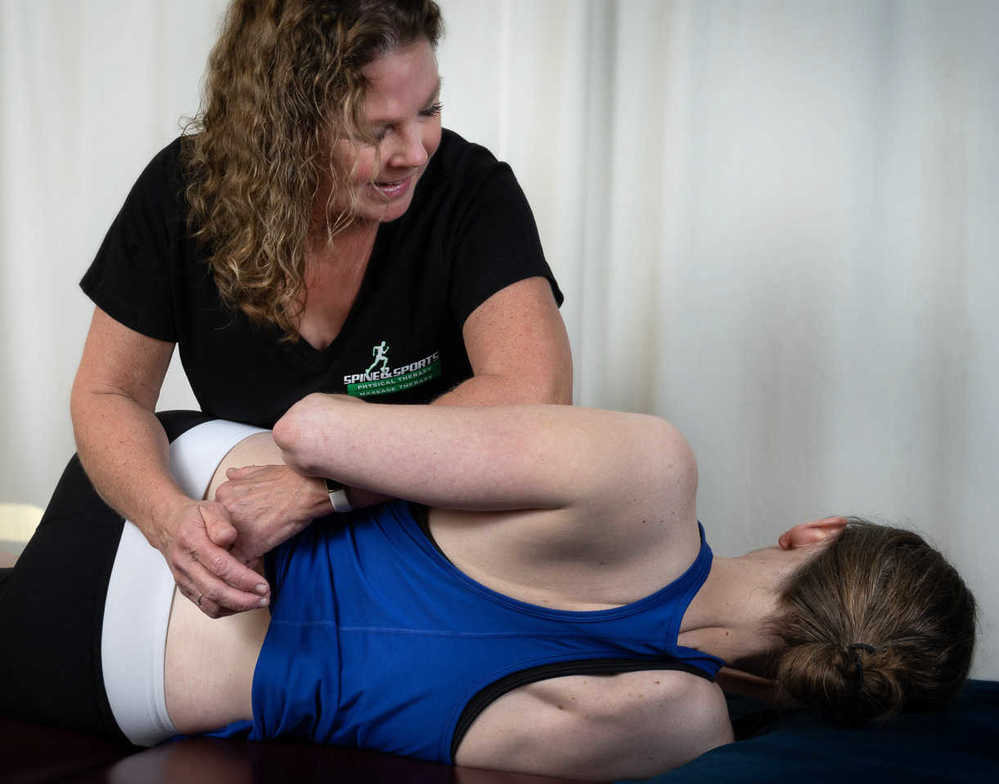
Muscle Energy Technique (MET) is a manual therapy that uses the gentle muscle contractions of the patient to relax and lengthen muscles and normalize joint motion. To define it specifically, it is “a direct manipulative procedure that uses a voluntary contraction of the patient’s muscles against a distinctly controlled counter-force from a precise position and in a specific direction”. It is considered an active technique, as opposed to a passive technique where only the massage therapist does the work. MET is based on the principle of reciprocal inhibition, a theory that explains that muscles on one side of a joint will always relax to accommodate the contraction of muscles on the other side of that joint when indirect pressure is applied. MET is often applied to patients who suffer from muscle spasms. The process of lengthening shortened or spastic muscles, to improve weakened ligament and muscle strength, will directly improve range of motion. This procedure is performed when a patient is asked to contract a muscle for approximately 5-seconds against the resistant force applied by the massage therapist. The muscle contraction is performed by the client 3 to 5 times in a row in the hopes to stretch the muscle further each time.
Muscle Energy Technique is derived from the theory that if a joint is not used to its full range of motion, its function will lessen and it will be at risk of suffering strains and injuries. This form of muscular therapy makes use of a patient’s own muscle energy (the force); while the massage therapist presents a stationary surface (resistance) the patient will contract their muscle against in order to stretch the muscle and joint to its full potential. Muscle energy techniques can be applied safely to almost any joint in the body. Many athletes use MET as a preventative measure to guard against future muscle and joint injury. It is mainly used by individuals who have a limited range of motion due to facet joint dysfunction in the neck and back, and for broader areas such as; shoulder pain, scoliosis, sciatica, unsymmetrical legs, hips or arms (for example when one is longer or higher then the other), or to treat chronic muscle pain, stiffness or injury. There are two types of MET:
- Post-Isometric Relaxation (PIR) The therapist stretches and lengthens a muscle as it relaxes right after a client contraction. This lengthens, relaxes and realigns the muscle fibers. This is useful with chronic conditions to assist in resetting the muscle tone.
- Reciprocal Inhibition (RI) It is a law of body dynamics that when you contract a muscle the opposing or reciprocal muscle must relax. That is the way the brain is wired and the principle that makes this technique work. The therapist has the patient’s muscle perform a contraction against resistance which relaxes the opposing muscle and minimizes the aggravation to the injured muscle and soft tissue.


